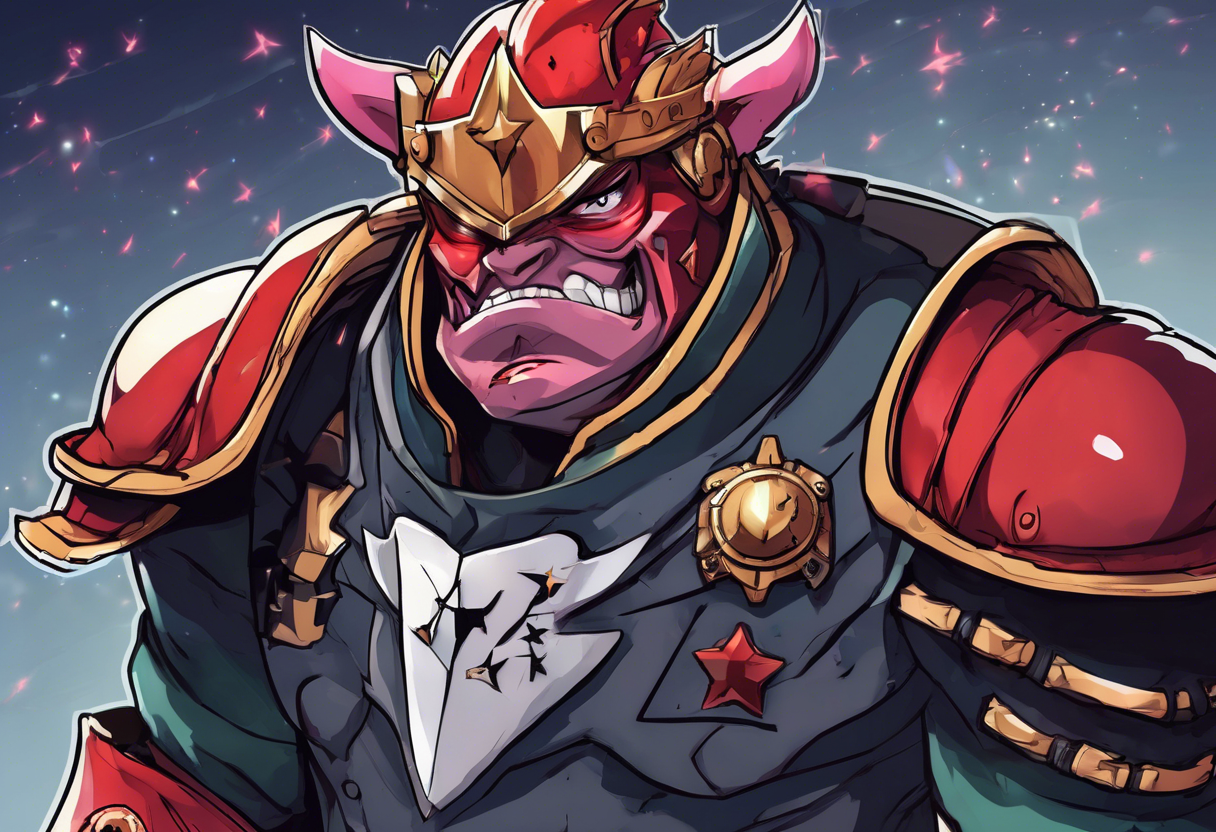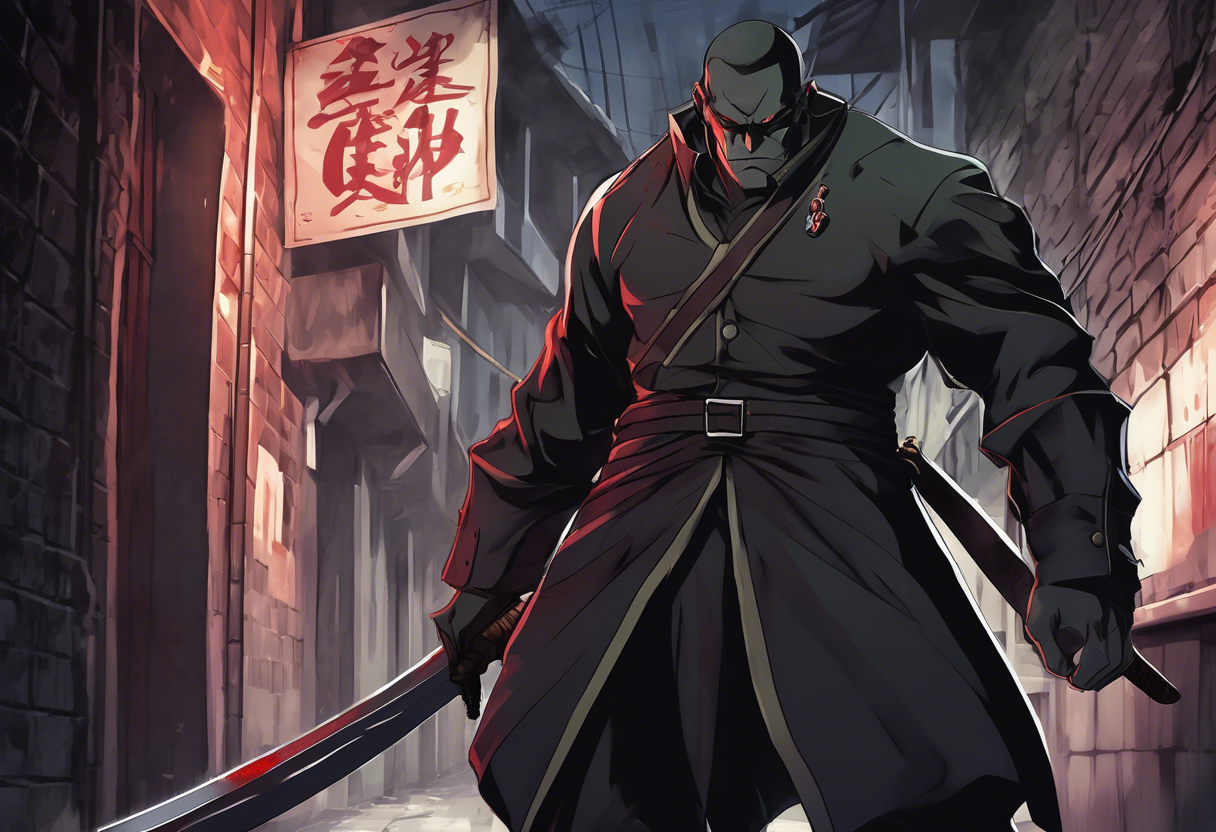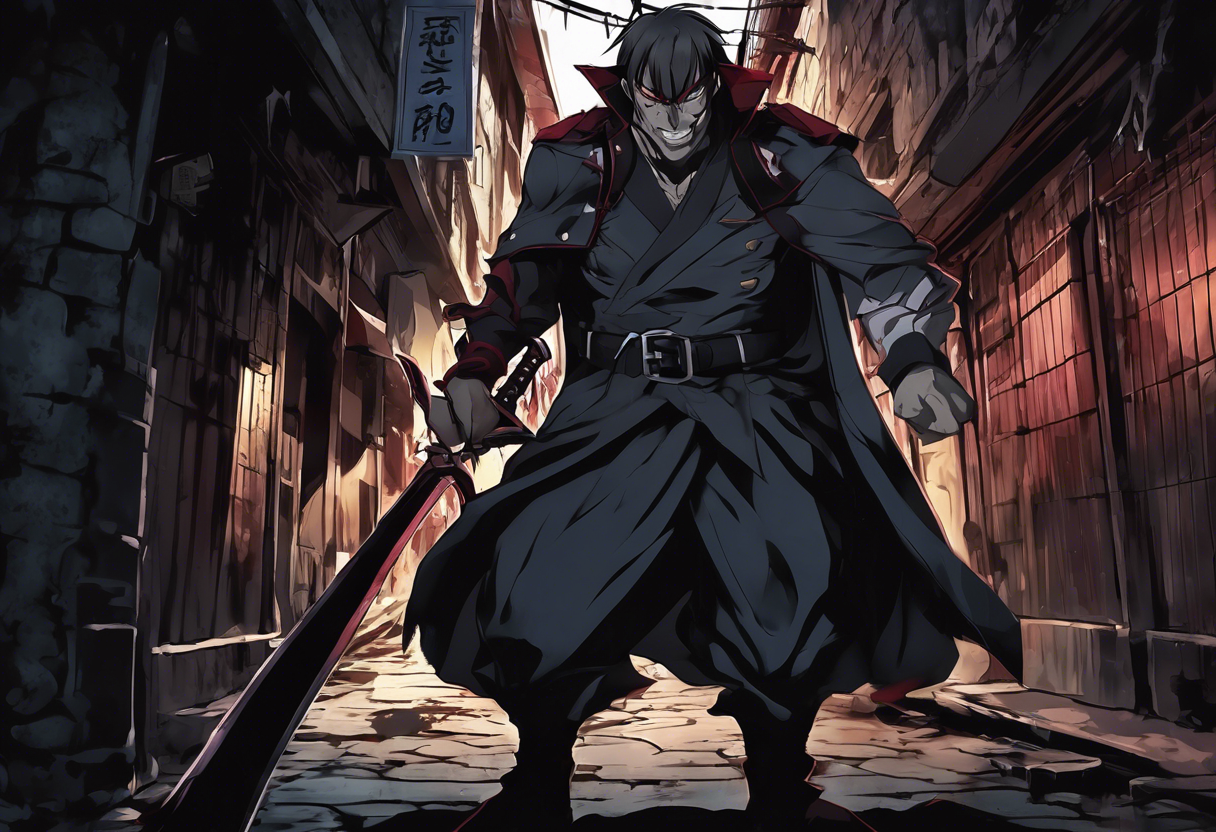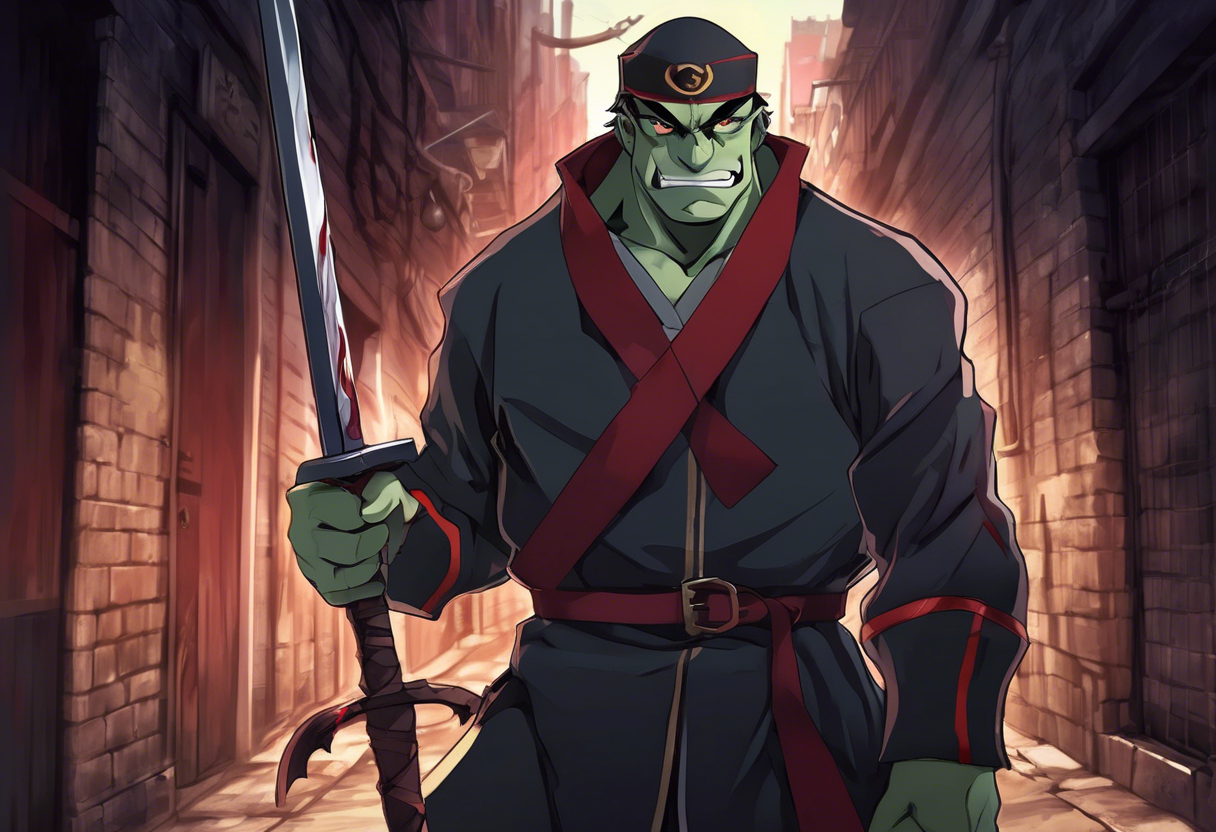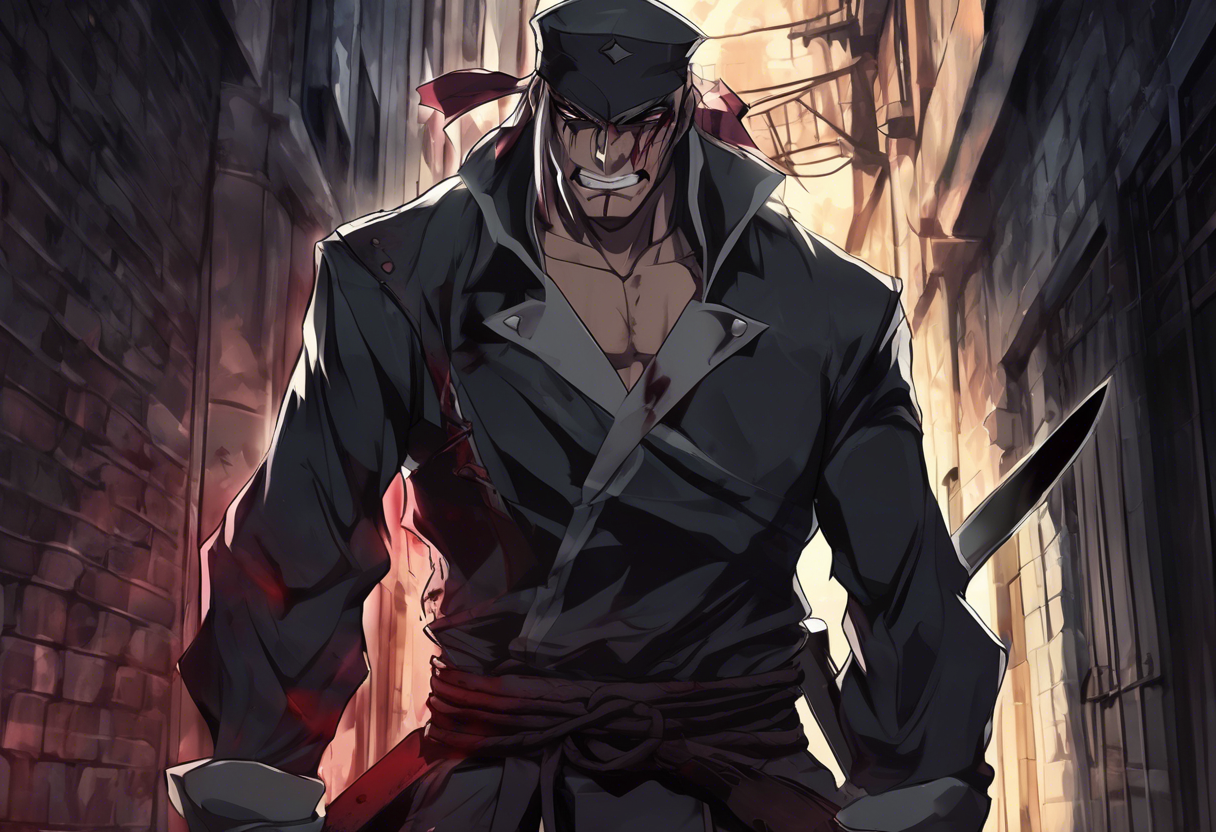Contents
Captain Ogre: A Corrupt yet Formidable Figure in Akame ga Kill!
Introduction
Captain Ogre, known as Ōga in Japanese, is a significant character in the anime and manga series Akame ga Kill, created by Takahiro and illustrated by Tetsuya Tashiro. He serves as a captain of the Imperial Police and is notably the former superior of Seryu Ubiquitous, a member of the Jaegers. Ogre’s character embodies the corruption and abuse of power prevalent within the Empire, making him a crucial element in the narrative.
Ogre’s creation reflects the series’ theme of highlighting the darker aspects of human nature and the consequences of unchecked power. His character is designed to illustrate the corrupt and oppressive nature of the Empire’s authorities, drawing parallels with historical and literary figures known for their tyranny and abuse of authority.
Role in the Story
Captain Ogre’s role in the story is pivotal, particularly in the early stages of the series. He is introduced as a powerful and corrupt figure who wields significant influence within the Imperial Police. His corruption is evident through his acceptance of bribes from criminals, such as an oil merchant named Gamal, and his habit of framing innocent people to protect the guilty [2].
Ogre’s relationship with Seryu Ubiquitous is also a key aspect of his character. He trained Seryu and instilled in her the skills and mindset that would later define her actions as a member of the Jaegers. This mentorship highlights Ogre’s influence on the characters around him and the broader implications of his corrupt practices.
Ogre’s arc culminates in a confrontation with Tatsumi, a young warrior who joins the assassin group Night Raid. This confrontation results in Ogre’s death at the hands of Tatsumi, marking a significant moment in the series as it showcases the growing resistance against the Empire’s corruption [1].
Character Analysis
Captain Ogre is characterized by his prideful and corrupt personality. He is depicted as a man who abuses his authority, often referring to himself as "the king of the city" [2]. This arrogance is matched by his physical prowess; he is incredibly strong and skilled in the use of swords, earning him the nickname "The Demon" [2].
Despite his formidable strengths, Ogre’s weaknesses lie in his overconfidence and corruption. His willingness to accept bribes and frame innocent people ultimately leads to his downfall. This duality of strength and weakness adds depth to his character, making him a more nuanced and believable figure.
Ogre’s character also serves to highlight the themes of corruption and the abuse of power. His actions and motivations are driven by self-interest and a desire for power, which contrasts sharply with the ideals of justice and equality espoused by the characters of Night Raid.
Themes and Symbolism
Captain Ogre is a symbol of the corrupt and oppressive nature of the Empire. His character embodies the themes of corruption, abuse of power, and the consequences of unchecked authority. Through Ogre, the series critiques the systemic failures that allow such corruption to thrive, reflecting broader societal concerns about justice, morality, and governance.
Ogre’s death at the hands of Tatsumi symbolizes the resistance against such corruption and the beginning of a larger movement towards change. This event is a turning point in the series, highlighting the growing momentum of the rebellion against the Empire.
Cultural Impact
Captain Ogre’s cultural impact is significant, particularly within the fan community of Akame ga Kill. His character represents a common trope in anime and manga—the corrupt authority figure—but his execution and integration into the story add a unique layer to this archetype.
Fans often discuss Ogre’s character in the context of his relationship with Seryu and his role in shaping her personality and actions. His influence on other characters and the broader narrative is a topic of interest, reflecting his importance in the series.
In terms of merchandise and related media, Ogre’s appearance is less frequent compared to other characters, but his impact on the story is well-recognized. He is often cited as an example of the series’ ability to create complex, morally ambiguous characters.
Critical Reception
Critics and viewers have responded to Captain Ogre with a mix of acclaim and criticism. His character is praised for adding depth to the narrative and for serving as a compelling antagonist in the early stages of the series. However, some critics argue that his character is somewhat one-dimensional, lacking the complexity of other characters in the series.
Despite this, Ogre’s role in highlighting the corruption within the Empire is widely acknowledged. His character serves as a catalyst for several key plot developments, making him an integral part of the story.
Legacy
Captain Ogre’s legacy in Akame ga Kill! is that of a formidable and corrupt figure whose actions have lasting impacts on the characters and the narrative. He contributes to the series’ exploration of themes such as corruption, power, and resistance, making the story richer and more engaging.
In the broader context of anime, Ogre’s character reinforces the importance of nuanced character development and the use of antagonists to drive plot and thematic exploration. His influence can be seen in other series that feature corrupt authority figures, highlighting the enduring impact of his character archetype.
References
- https://akamegakill.fandom.com/wiki/Ogre
- https://aminoapps.com/c/akame-ga-kill/page/item/ogre/NMXe_K5HWImkQbLZ3pPmejRoxpEa4nqXe
- https://en.wikipedia.org/wiki/List_of_Akame_ga_Kill!_characters
- https://comicvine.gamespot.com/akame-ga-kill/4050-69595/characters/
- https://www.behindthevoiceactors.com/tv-shows/Akame-ga-Kill/Ogre/

